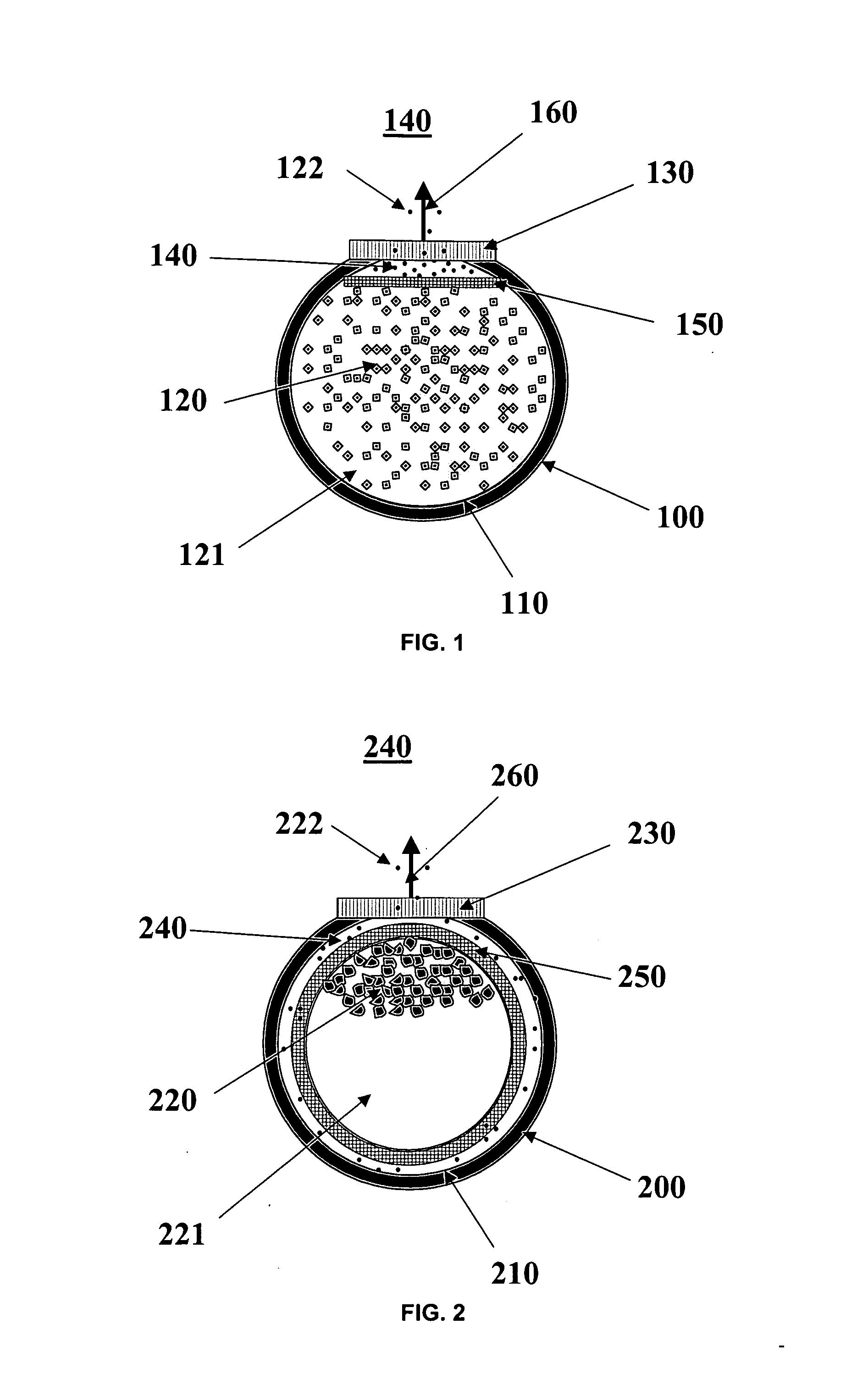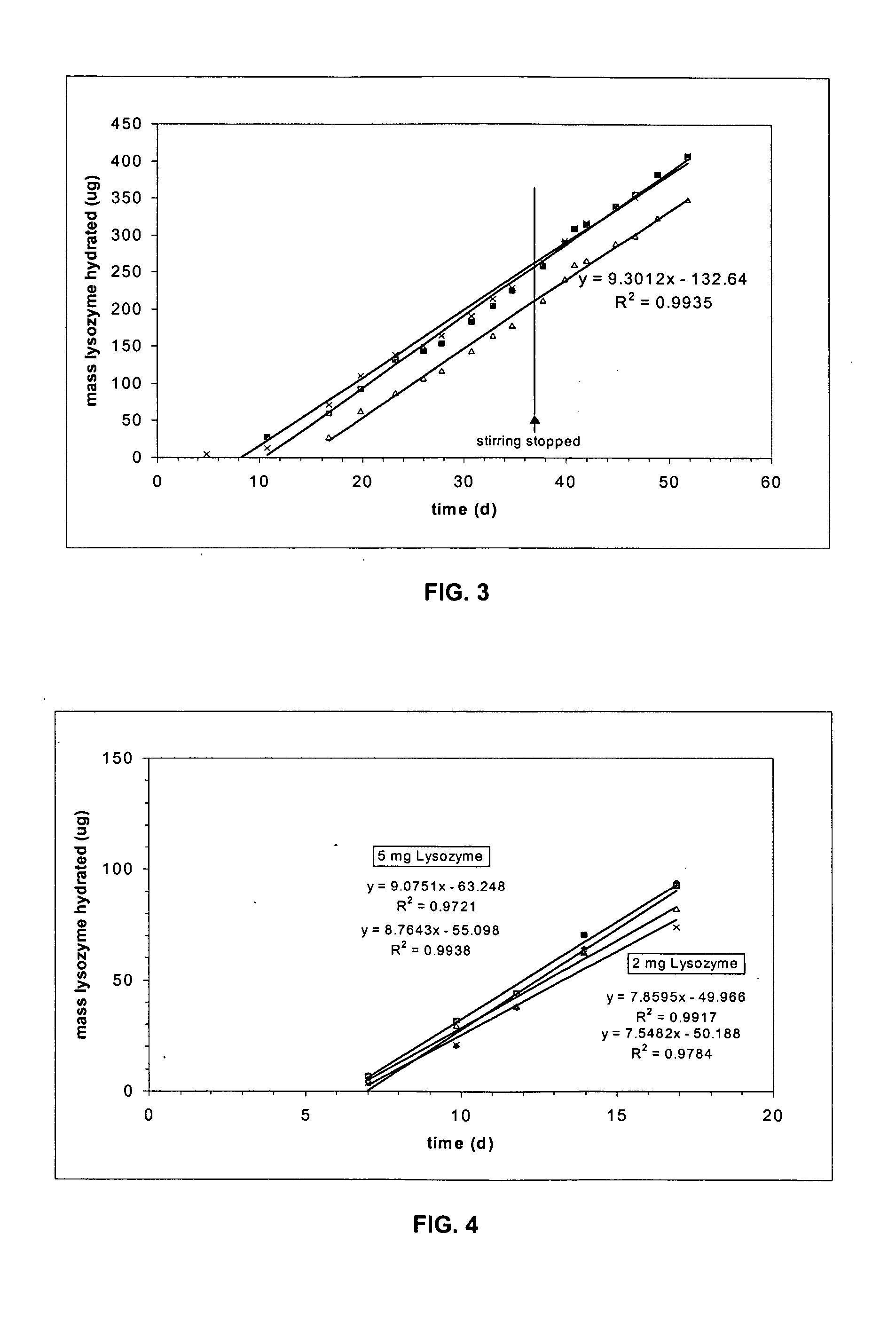Implantable drug delivery device for sustained release of therapeutic agent
a drug and drug technology, applied in the direction of powder delivery, medical science, medical preparations, etc., can solve the problem of compound stability that is limited
- Summary
- Abstract
- Description
- Claims
- Application Information
AI Technical Summary
Benefits of technology
Problems solved by technology
Method used
Image
Examples
Embodiment Construction
[0017] In the context of the present invention, the term “therapeutic agent” refers to a biological or chemical agent used in the treatment of a disease or disorder. The phrase “agent stability in dehydrated form” refers to acceptable percentage of the agent's original biological activity (e.g., 80%) being retained for a period of at least three months at 37° C. when the agent is in a form where no water is present. A compound has “limited stability in aqueous form” if it loses more than 25% of its biological activity when stored in aqueous solution at 37° C. for 3 months. Typically a compound with limited stability in aqueous solution will lose more than about 50% of its activity under these storage conditions.
[0018] The term “nanopore channels” refers to a channel in which at least cross-sectional dimension is in the range of 4 to 50 nanometers. The other cross-sectional dimension is typically in the 2 to 50 micrometer range. The length dimension of the channels is typically in t...
PUM
 Login to View More
Login to View More Abstract
Description
Claims
Application Information
 Login to View More
Login to View More - R&D
- Intellectual Property
- Life Sciences
- Materials
- Tech Scout
- Unparalleled Data Quality
- Higher Quality Content
- 60% Fewer Hallucinations
Browse by: Latest US Patents, China's latest patents, Technical Efficacy Thesaurus, Application Domain, Technology Topic, Popular Technical Reports.
© 2025 PatSnap. All rights reserved.Legal|Privacy policy|Modern Slavery Act Transparency Statement|Sitemap|About US| Contact US: help@patsnap.com



